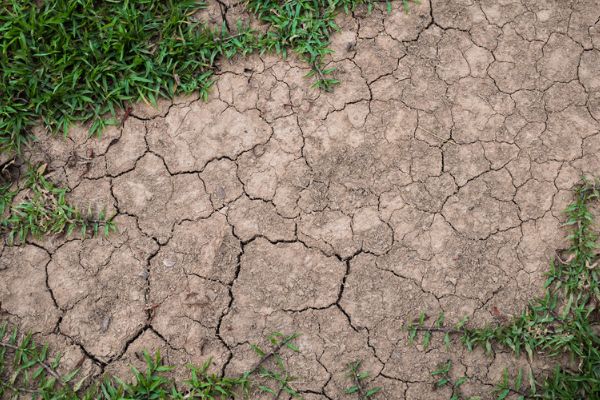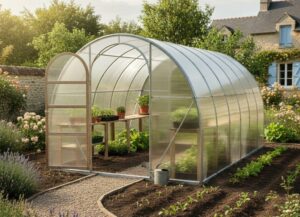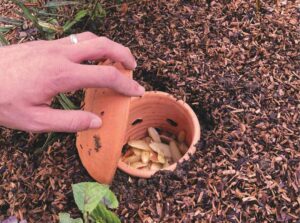In this article, we will explore different strategies, ranging from ground cover plants to mulching with plant waste, including the use of Ollas Jamet, the creation of shade through trees and shrubs, and the installation of water points.
Put ground cover plants resistant to drought:
One of the first solutions to consider in combating drought is the use of ground cover plants adapted to arid conditions. These plants, such as Artemisia, Lavender, or Sedum, have the ability to thrive with little water . They often have thick, waxy leaves that reduce transpiration, preserving their internal moisture .
In addition, they provide ground cover that limits water evaporation and prevents weed growth.

Use mulch from plant waste:
Another effective technique to combat drought is to use mulch made from plant waste. This method has several advantages. First, mulch helps reduce water evaporation from the soil by protecting it from direct sunlight.
Also, it conserves moisture by preventing the soil from drying out quickly. By using materials such as fallen leaves, grass clippings or wood chips, you will also improve soil structure and promote beneficial microbial life.
Install Ollas Jamet:
Ollas Jamet are porous clay pots used for irrigation . They are buried near plants and filled with water. Thanks to their porosity, the water infiltrates slowly into the soil , directly to the roots of the plants, thus avoiding the waste of water by evaporation. This ancestral method is effective in maintaining regular and adequate plant hydration while saving water. By using the Ollas Jamet you will be able to better control the irrigation of your garden and minimize water loss.
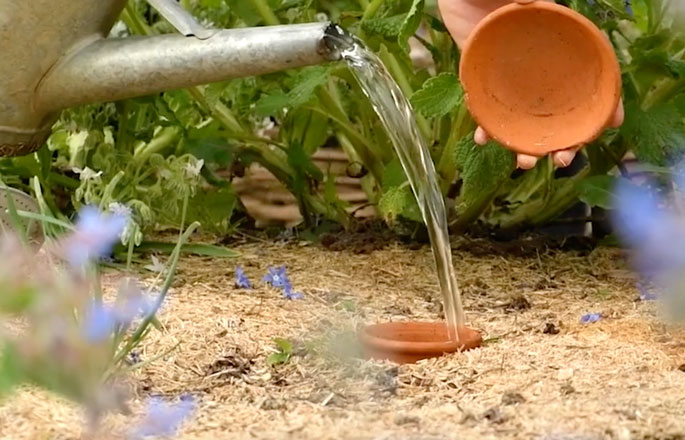
Reduce garden mowing and limit lawn spaces:
A common practice is to mow the entire garden regularly. However, by letting certain parts of the grass grow longer, you will create a natural cover that retains soil moisture and protects plant roots from excessive heat. Unmowed areas act as buffer zones, reducing water evaporation and providing additional shade.
In addition, a slightly longer lawn promotes the development of deep roots, which allows plants to better withstand drought. Consider reducing the area of your lawn by replacing it with drought-tolerant plant beds, rock gardens or gravelled areas. Lawns require a significant amount of water to stay green, while other types of landscaping can be just as attractive while requiring less maintenance and watering.
Introduce trees and shrubs to create shade:
Trees and shrubs play a vital role in combating drought. Their dense foliage provides protection from direct sunlight, reducing water evaporation from the soil. By planting species suited to your climate, such as holm oak or red cedar, you can create shady areas in your garden , providing refuge for the most heat-sensitive plants.
In addition, trees and shrubs help maintain ecological balance, providing habitat for beneficial birds and insects.
Install water points:
Installing water points in your garden is a great idea to combat drought. Ponds , fountains or small ponds provide a constant source of water for plants and will also attract birds, butterflies and other animals which contribute to the ecological balance of your garden. Make sure that the water is renewed regularly to avoid stagnation and the proliferation of mosquitoes. In addition, you can install drip irrigation systems around your plants to supply them directly with water, thus reducing evaporation losses, or even use Ollas Caving (Ollas connected in series ) .
Collect and use rainwater:
Install rainwater harvesting systems, such as gutters and drip pans , to collect rainwater. This water can be used later to water your garden during dry periods. Rainwater is natural, free, and chemical-free, making it a valuable resource for preserving soil moisture without the need for potable water.
Choose drought-tolerant plants:
Opt for plants that are naturally adapted to arid climates and require less water to thrive. drought-tolerant native plants are excellent choices. These plants have evolved to adapt to drought conditions and can survive with minimal water.
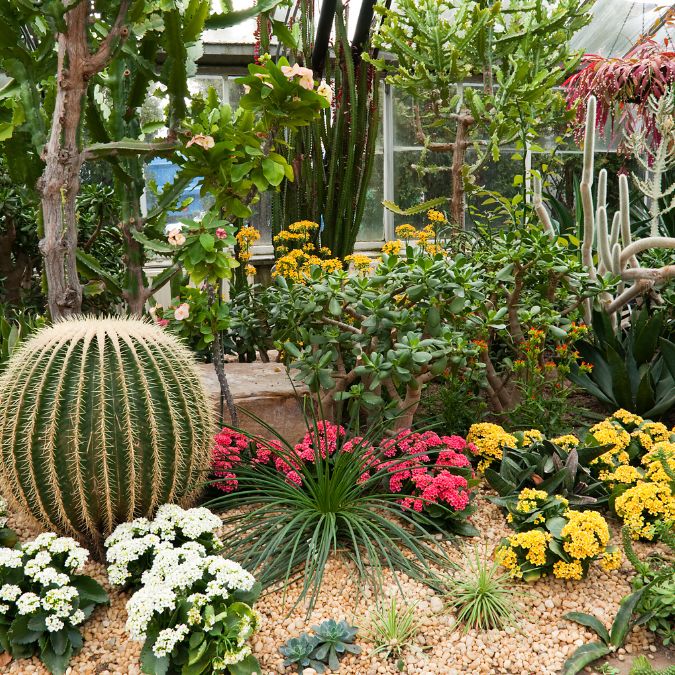
Implement crop rotation and soil improvement:
Practice crop rotation in your garden to prevent soil nutrient depletion. Healthy soil rich in organic matter retains water better and provides the nutrients plants need to resist drought. Add compost regularly to improve soil structure and increase its ability to retain moisture.
Use temporary shading techniques:
By using shade sails, trellises or pergolas covered with climbing plants, you can create temporary shaded areas in your garden. These structures provide protection from direct sunlight, reducing evaporation of water from the soil and allowing plants to better withstand drought.
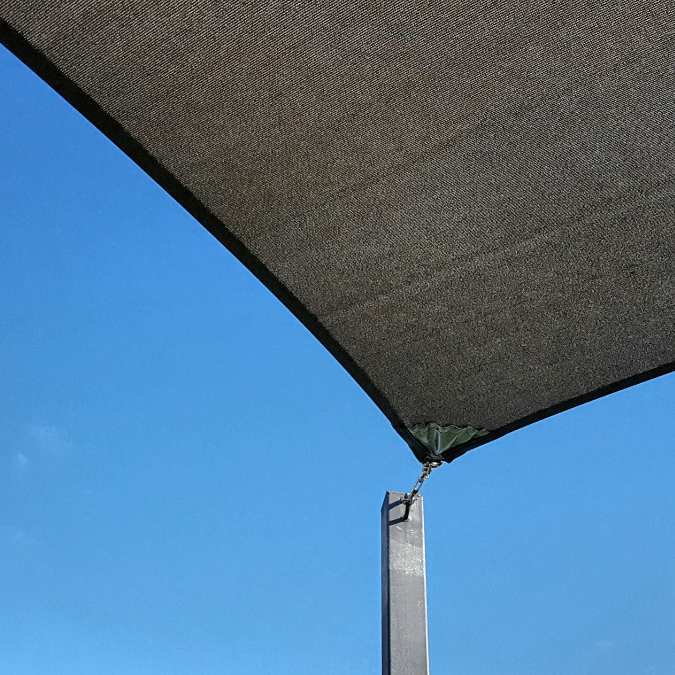
Combating drought in the garden requires a proactive approach and various strategies. By using drought-resistant ground cover plants, mulching plant waste, using Ollas Jamet, limiting garden mowing, planting trees and shrubs to create shade, and installing water points, you can preserve the beauty and vitality of your garden even in times of drought.

